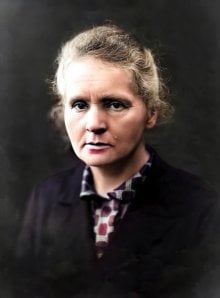In this thesis, Marie Curie summarizes her groundbreaking research on radioactivity. Curie delves into the study of uranium radiation and the determination to isolate and identify polonium and radium as highly radioactive elements. Due to the significance of this research, Marie Curie became the first woman to win a Nobel Prize in Physics.
 Marie Curie's inspiring biography, born November 7, 1867, overcoming obstacles and pioneering scientific discoveries. Learn from her powerful quotes.
Marie Curie's inspiring biography, born November 7, 1867, overcoming obstacles and pioneering scientific discoveries. Learn from her powerful quotes.
More about Marie Curie